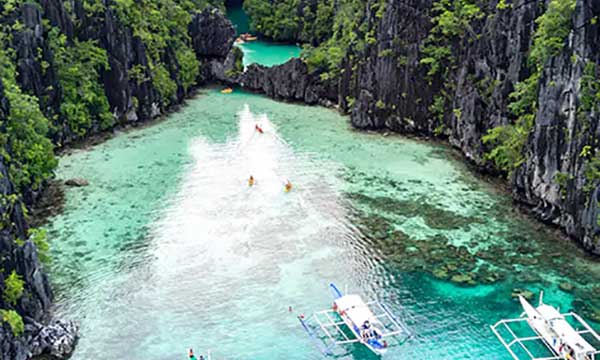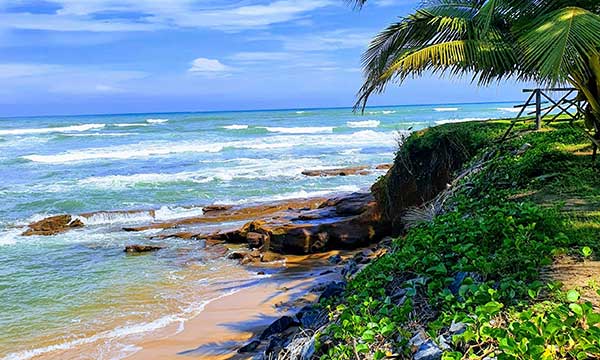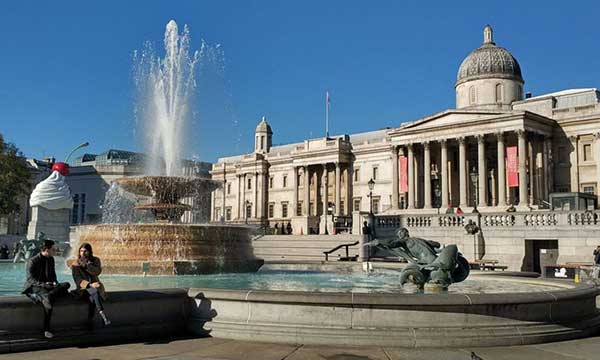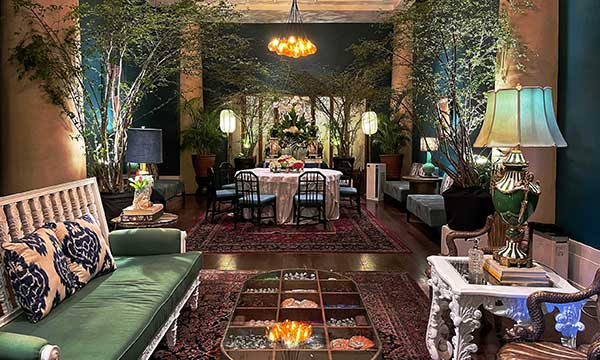ESG Strategy & Implementation for El Nido Resorts

Project Type
ESG Advisory
Country
Philippines
Case Study Title
El Nido Resorts Philippines ESG Strategy & Implementation
The Client
El Nido Resorts is a privately-owned group of resorts, trading under the name “Ten Knots Development Corporation”. They operate in El Nido, Bacuit Bay, Palawan Island, Philippines.
The group was initially created and operated by two Japanese brothers, who loved scuba diving and operated live aboard dive tours in Bacuit Bay.
In 2003, two environmental developers from the US, and their Philippine partner, all of whom were on the global board of the World Wildlife Fund, bought the Resort Group. They went about revitalizing the group, starting with recruitment of a new Operations Team.
Background
The author of this overview is Mr. Etienne La’Brooy, who was General Manager of El Nido Resorts (ENR) from 2004-2010. Mr La’Brooy was considered a remote resort specialist, having managed Lindeman Island in Australia, Millbrook Resort in New Zealand, and Fridays Resort in Boracay Philippines.
He was recruited in late 2003, and commenced employment in February 2004. He was able to complete a “Mystery Shopper Assessment” of operations prior to officially starting employment. He also enjoyed a 2-month handover from the incumbent and outgoing Japanese GM, who had been with Ten Knots since 1995.
Client Need
The Ten Knots Board of Directors wanted El Nido Resorts to be the benchmark for sustainable resort operations in Asia. The owners and board were enthusiastically supportive of any effort to achieve this goal. This was critical, as major capital expenditure was initially needed to bring operations up to a truly sustainable level. This initial investment had a fairly fast return from a dramatic increase in profitability.
Scope of Work
The Board specifically requested that we create and implement a revised Mission and Vision for the Group, that would guide us in development and operations.
The Mission and Vision was created around an overriding statement that we should strive to achieve “A Quadruple Bottom Line”. This was the perfect harmony of achieving a fair operating profit, while also protecting the environment, improving local livelihood, and having a happy and contented workforce.
Quadruple Bottom Line
The Owners and Board of El Nido Resorts created and implemented a Mission and Vision for the group that all operational practices had to follow. The key mission was to aspire to achieve a quadruple bottom line. All of the following were equally important, and one could not suffer because of another.
- Protect the Environment – El Nido in Palawan is a truly magnificent natural setting. As the El Nido Resorts were the main business operating in Bacuit Bay at the time, we became the main custodians of the environment. This was hugely important to the ongoing financial sustainability of the properties as their unique selling point was the wondrous natural beauty and cleanliness of the area.
- Improve Local Livelihood – We had a commitment to employ a minimum of 90% of our workforce from the local community. We developed programs where we funded sending 20 young college-age locals to hospitality school in Puerto Princesa each year. This bottom line also ensured that we would buy as much as possible from local vendors, and adjust our menus to focus on local products.
- Manage and retain a happy workforce – Apart from the beautiful environment of the area, the one key thing that most guests complemented us on was how warm and friendly all our staff were. This was achieved by ensuring they were paid properly, given high quality board and lodging, trained well, and made to feel that all were ambassadors for the resorts. As a result, all staff welcomed guests as if they were entertaining close friends in their own homes.
- Make a fair profit and return on investment – It goes without saying the Owners and Board expected a fair profit and return on investment. In all honesty, the first three “bottom lines” contributed greatly to us being able to consistently increase occupancy and RevPar each year, which in turn helped us achieve record profits year after year.
What did the Hotel Solutions Partnership Consultant achieve for the client?
It is difficult to summarise all the achievements of the six years into a brief statement. The key in the turnaround of El Nido Resorts from making an annual loss and being a minimally sustainable operation, into a profitable sutainability benchmark property, was Owner support of an Operations Team that lived and breathed ESG, while operating a 5 Star standard operation in a truly beautiful location.
The following is a list of achievements, of which many can be realistically implemented in most global hotels and resorts. Many are obviously related to resort-specific properties. It is important to understand that ESG is not just energy and water reduction, which are of course very important, but only a part of an overall ESG program.
Protect the Environment
- Environmental Team – ENR employs a Marine Biologist to oversee and manage the Environmental Mission of the whole group. This person is still in the role after 25 years. In fact, their role has been developed further by being given more seniority in the management structure, to ensure the Company Mission is achieved. There is now a team of 10, selected from college graduates and local applicants helping train and implement all environmental practices in the group.
- Guests Environmental Training – This started with all our collaterals for marketing and operations, aimed at guiding the guests in understanding of how they could help the environment. Most activities included some sort of environmental guidance. Daily environment briefings were held to educate all interested guests. We also included guests in any activities involving animal life such as Bay Turtle releases. Our team developed a unique sea life, fauna and flora online database that listed details of all the natural elements of the region for guests to review.
- Work closely with the Local Government Unit (LGU) to inspire and implement sustainable practices – We worked closely with the LGU to help educate the local community in becoming sustainable. This included minimizing illegal and destructive dynamite and compressed gas fishing, eliminating slash and burn of forest lands, reducing illegal logging, proper waste management, and proper use of buoys instead of the harmful use of anchors.
- El Nido Foundation (ENF) – El Nido Resorts funded and chaired this non-profit organization that was created to improve livelihood of the people of El Nido region.
- Guest Environmental Activities – We invited all guests to join in our regular environmental programs such as beach clean-ups, and Crown of Thorns starfish gathering. Also the collection and transfer of turtle eggs to protected sites, as the local large lizards (Bayawaks) would find and eat the eggs if not protected.
- Sustainable / Renewable Energy – The resorts were able to implement some basic renewable energy that was prominent at the time (2005), being solar panels at Miniloc Island Resort during construction of new rooms. We also looked at other renewable sources like wind power and deep-sea water cooling.
- Energy Conservation – We implemented several ways of reducing energy that had excellent ROI. All light bulbs were changed to LED. We purchased water heaters that used the energy from air conditioning for all rooms and operations. All guest rooms had ceiling fans to encourage guests to not use Air Conditioning. All new rooms were designed to have excellent passive cooling elements.
- Wastewater Treatment – We upgraded to state-of-the-art sewage treatment plants (STPs) to ensure that all wastewater was safe to discharge into open water. The product water was also used for flushing all toilets.
- Water Conservation – All our water in the resorts was produced by reverse osmosis desalination, so it was in our best interests to minimize water use. We used the product water from our STPs not only to flush all toilets, but also to water plants and grass. We collected rainwater and built special concrete water tanks for collection. We installed water limiters in all showers to reduce water pressure without affecting the guest experience. We instigated a policy of changing guest linens after 2 nights stay or as necessary.
- Materials Recovery Facility – All waste was segregated and sent to our Materials Recovery Facility on the mainland. All biodegradable waste was placed in our composts, and the by product was used for our farms and general gardening. All recyclable waste was given to local recyclable waste companies for proper reuse. All damaging waste such as kitchen and engine oil was given to Certified local companies for proper disposal.
- Sustainable Menus – We designed menus to use as many locally-produced products as possible. Our purchasing and kitchen teams were trained to properly inspect all fish bought from local fisherman to ensure we did not buy fish bought from illegal practices (dynamite fishing). All our pork was purchased from the local Pork Association. We purchased fruit, vegetables and herbs from local farmers.
- Supply of Product Packaging – All suppliers were requested to minimize all packing materials and eliminate plastics in products sent to the resorts. Most product from Manila was repacked into reusable containers in Manila before being sent to the resorts. This reduced waste dramatically. Suppliers were welcome to retrieve all this unused material for reuse.
- Carbon sequestration & Reforestation Programs – Our Company airline offered carbon offset programs and also funded reforestation of watersheds in El Nido. This has become a much-desired activity for guests where they could plant a tree on a visit to the mainland.
- Eliminate Single Use Plastics – We stopped buying bottled water in 2005 (well before it became a general practice in the industry), and instead gave all guests a reusable water bottle that they could refill at the resorts and during activities.Water was placed in refillable flasks in the guest rooms. All bathroom giveaways were in refillable containers, again well before most other properties. We always used specially formulated bath gel and shampoo that did not negatively affect the bacteria in our STPs. Laundry bags were made of Cacha material rather than plastic. Plastic straws were replaced with paper ones.
- Reef Protection – We installed buoys at all dive sites and activity areas in coordination with the LGU. This ensured that all boats did not drop anchors and affect reefs. Our company also worked with a USA Based NGO to install ceramic reefs in several sites, that had been damaged by dynamite fishing and also climate change.
- Low Emission Speedboats – The resorts were located in a large Bay, and as such, we used a fleet of 15 speedboats to ferry guests around the bay, and to-and-from the local outrigger boats (Banca) for their activities. We used Yamaha ETEC engines as they were highly efficient at minimizing noise and exhaust emissions. They were much more expensive than normal outboards engines, but were considered vital to a high quality guest experience.
- Minimize Guest Carbon Footprint – We offered many free guest activities that had zero carbon footprint. These included kayaking, sailing, rock climbing, hiking tours, bird watching and snorkelling.
- Sustainable Design and Products for new construction – We always endeavoured to select, purchase and use local materials for construction that were fully permitted, and highly sustainable such as Bamboo. All landscaping designs used endemic plants exclusively.
- Environmental Awards – The Board regularly invited international environmental authorities to do audits on our operations, which included random interviews with staff from different departments. The resorts gained international acclaim by winning many environmental awards, from groups such as PATA, Conde Nast, ASEAN, and Wild Asia Responsible Tourism Awards (WARTA).
- Environmental Management Team – Each resort had a committee made up of staff from all departments, that met weekly to discuss and manage all environmental practices. This was considered just as important to the group as the Emergency Management Team.
Improve Local Livelihood
- Work closely with the LGU and NGOs to educate the local community – Our Environmental Team created special training programs for the LGU, local businessmen, and schools to educate them about protecting the environment. This was derived from the BE GREEN program.
- Sustainable Menus – We bought as much as possible from the local community. All pork and seafood came from local Pig Farmers Association and fishermen. Our encouragement meant many locals became farmers (instead of harmful fishermen), who grew products for our guest and staff menus. We always strove to reduce the food-miles of our menus.
- El Nido Doctors community programs – Our doctors at the resorts (usually fresh grads who wanted a year’s work experience), each did regular weekly community consults for free. This offered free medicals for many locals who had limited opportunity for medical consultation. We also sponsored several Doctor Caravans where volunteers from Manila visited the region offering medical and dental consults.
- Happy Pig Program – We instigated through the El Nido Foundation a program where we gave a piglet to local families who would feed and rear the pigs and then sell them to the Pig Association.
- ENR Farms – We operated a large farm that further reduced our need for purchasing perishables in Manila. This grew all our needs in terms of lettuce, herbs, several fruits and vegetables, as well as farmed fish (for our staff).
- Build Homes Program – Our regular guests from Hong Kong worked with the El Nido Foundation and Gawad Kalinga to build homes for the disadvantaged. This program is still running today after more than 15 years.
Manage & retain a happy workforce
- Empower Staff to welcome guests into their own home (El Nido) – All staff were embodied with a general ethos of welcoming all guests to the resorts as if they were welcoming family to their own residence. This gave our staff a huge sense of pride.
- Environmental Training – All staff were given the BE GREEN training as well as specific training on the local geography, sea-life, fauna and flora.
- Annual Bonus Scheme – All staff were entitled to a bonus scheme based on performance that was linked to the resort’s quadruple bottom line.
- Annual Family Days – We offered bi-annual family days where management, staff, and their families got together at our beach clubs for bonding sessions.
- Small loans for schooling – We encouraged our staff to ensure their children were given proper education. Anyone needing loans for this purpose were provided at zero interest. Annually up to 20 local school grads were selected for scholarships to a regional HRM University.
- Staff Awards – Encouragement was given by having monthly and annual staff awards for excellence with quality prizes.
- Staff Bonding – We implemented regular staff parties to ensure staff bonding was optimized. This sometimes involved environmental activities like beach and reef clean-ups.
- Stay Out Programs – Our staff worked on a simple but necessary system where they took all their days off in one consecutive period. This was designed specifically for our staff hired from Manila, but also implemented for local staff. We changed this to allow all local staff to take their weekly day off as scheduled, by offering a night and morning boat service to town.
Make a fair profit & return on investment
- Annual Budget presentations – The Board requested detailed departmental budgets explaining all Environmental Procedures and costs, to show we were hitting our mission while still achieving a fair bottom line profit.
- Cost Benefit Analysis – All departments were required to maintain updated cost benefit analysis for all sustainable practices that had been implemented. This showed the benefits and increased costs for each.
- Management Bonus Structure – All Managers and Supervisors had detailed Key Result Areas and Key Performance Indicators that they were judged on. This ensured everyone was working towards helping the company achieve the Quadruple Bottom Line.
- Local workforce – This was a great benefit to livelihood, but also costs were lower than bringing from Manila, and retention time was significantly higher. Many staff have over 10 years tenure in the group.
- ENR Farm – This significantly reduced our cost of sales for food, as the farm was run at break-even, so all products were at least 50% less than from Manila, and food-miles were minimal.
Summary
The El Nido Resorts’ story can be a great guide to all in the industry. The key ingredient is having a top-down approach to design and implementation of sustainable practices. Many of the policies can be applied to any operation in a city or remote location.
By: Etienne La’Brooy
Hotel Solutions Partnership VP, and former General Manager, El Nido Resorts.









Follow